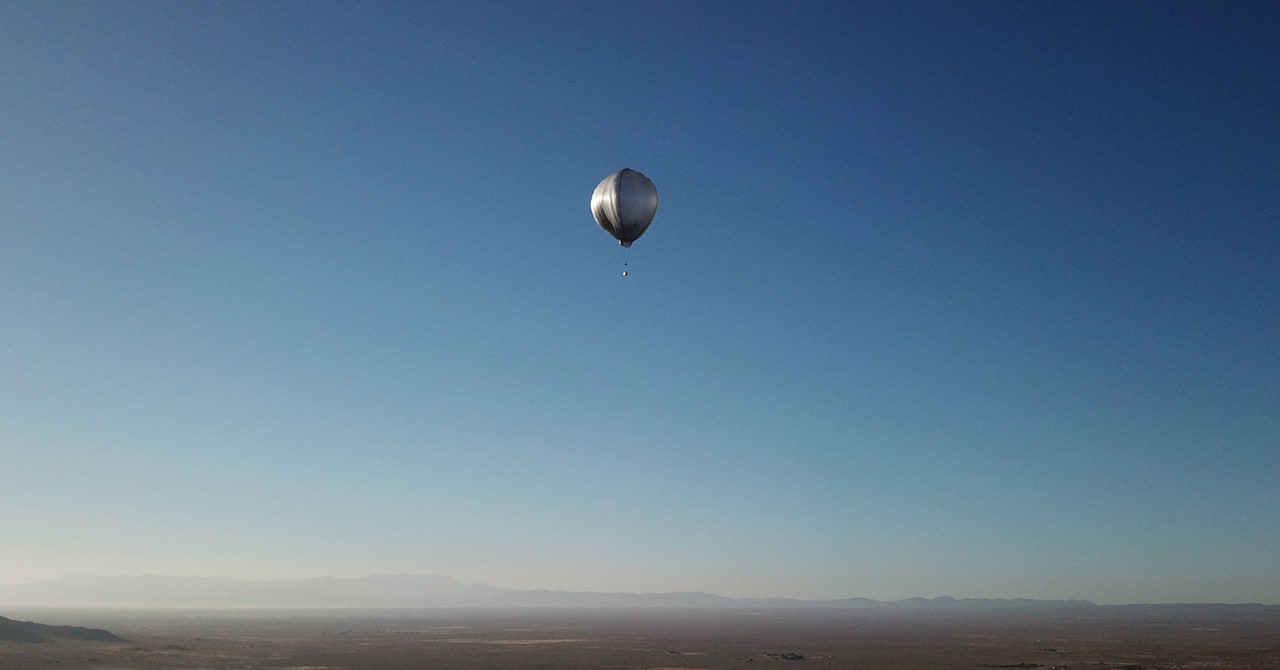
Seismology is about waves. The epicenter of an earthquake is like a stone dropped into a pond. The disturbance ripples outward along Earth’s crust. That movement translates into a pressure change in the air just above the ground. This produces infrasound waves (long, slow sound waves so low that humans can’t hear them) that travel through the atmosphere both straight up from the epicenter (epicentral waves) and above seismic waves as they travel along the earth (surface waves).
On Earth, a network of seismology ground stations uses sensors to detect these waves, and to identify the epicenter and strength of quakes. The new study demonstrates how a balloon equipped with sensors can do the same from the air. A balloon-borne barometer that captures only epicentral or ground infrasound waves can lend some insight into a quake’s location and strength. One that captures both might tell what the crust of a planet looks like. That could prove useful in scoping out the surface of a planet we can’t actually see.
(Seismological data also works for ones we can see. Marsquake readings from the InSight lander have been invaluable in mapping the Martian crust.)
To prove that studying Venus’ seismology from the air was possible, the team planned a flight campaign in Oklahoma—where earthquakes are frequent, probably due to fracking—to test out whether they could hear the infrasound of Earth’s rumblings from high up in the atmosphere. But when the Ridgecrest series of earthquakes struck near JPL’s Los Angeles home base, in 2019, triggering thousands of small aftershocks, senior program manager James Cutts, research technologist Siddharth Krishnamoorthy, and others on the team sensed an opportunity. “This had to be done quickly, since the later it got, the weaker and less numerous the aftershocks were,” Krishnamoorthy says.
Problem: They didn’t have balloons yet. Over a frantic 16 days, they scrambled to build four ultralight “heliotropes,” simple balloons about 20 feet in diameter and 12 feet tall, made using plastic sheeting and tape. The heliotropes—named Tortoise, Hare, Hare 2, and CrazyCat—rose into the stratosphere as the sun heated the air inside their charcoal-covered plastic balloon “envelopes.” They floated freely with the breeze, each with a barometric sensor package hanging from a tether below, listening for the very faint sounds of an aftershock.
On July 22, 2019, the ground shook with that aftershock. As it passed below the balloons, it produced surface infrasound wave disturbances that traveled upward 4.8 kilometers and hit Tortoise’s barometer, registering as a series of tiny pressure changes. These changes were so small that it took Krishnamoorthy months of data analysis after the flight to see them. But there they were: Tiny wave profiles neatly matching quake readings from four ground-based seismometer stations in the area near the balloons. They matched computer models of infrasound propagation from the aftershock, too. Tortoise had heard the quake.
But could a balloon capture seismic infrasound while floating in the atmosphere of Venus? There, the balloon would be flying much, much higher—about 50 kilometers rather than 5. At that altitude, Venus’ acid clouds might attenuate the infrasound waves, making them slightly harder to detect. (What does Venus sound like? Here’s what Bach might sound like on Earth, Titan, Venus, and Mars, due to different sound wave attenuation factors.)
Yet other factors would work in the balloon’s favor. Though Venusian winds blow steadily at more than 200 miles per hour, a balloon at stable altitude should remain relatively “quiet” as it breezes along. (Imagine the calm of being on a hot air balloon, which is traveling at the same speed as the wind.) Because of the super-thick Venus atmosphere, Byrne writes, Venus’ surface is coupled to that atmosphere some 60 times more effectively than Earth’s is—which means that the energy from a quake will be much more readily transmitted into the atmosphere on Venus, making it a prime locale for floating a seismometer.


